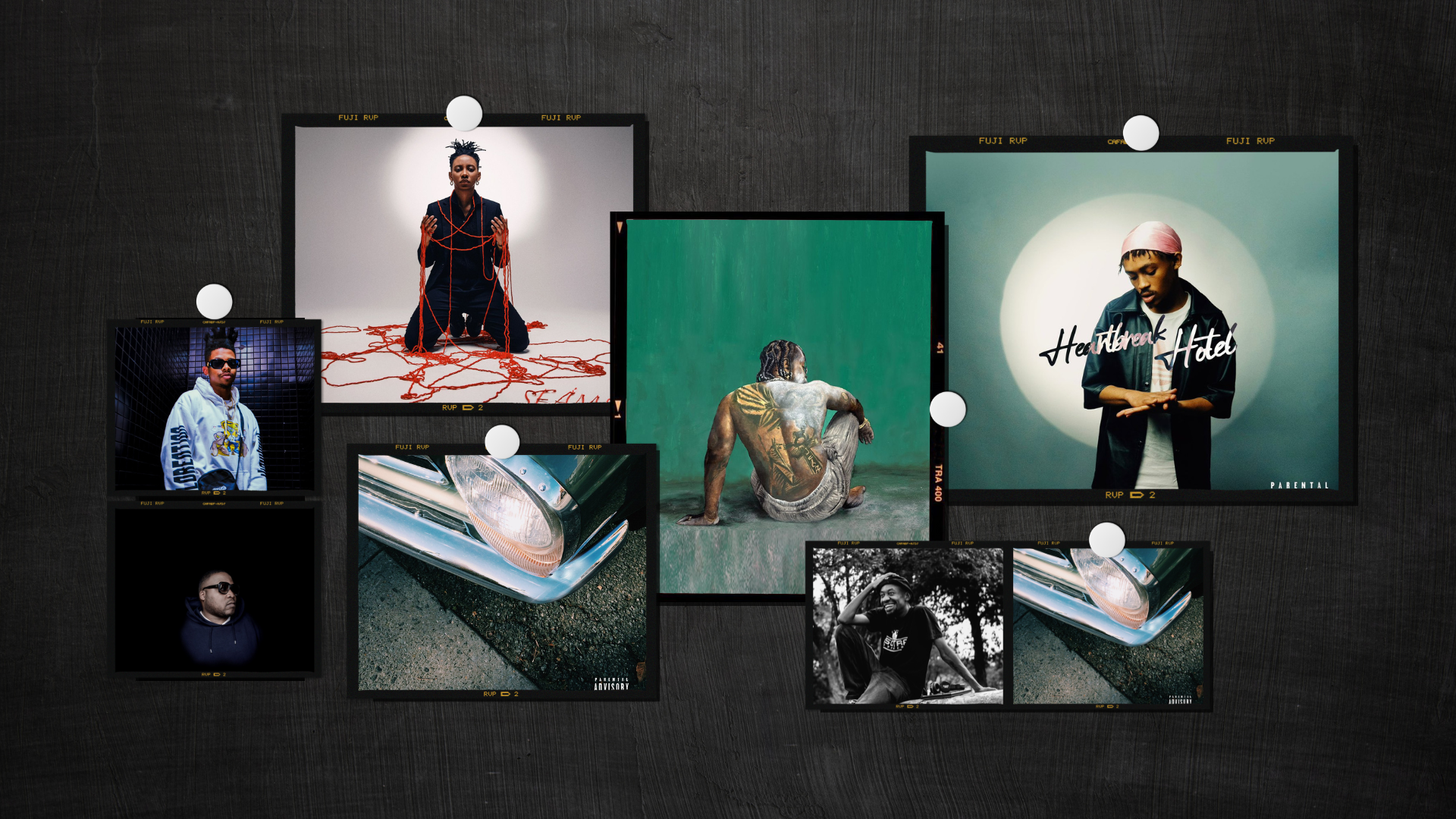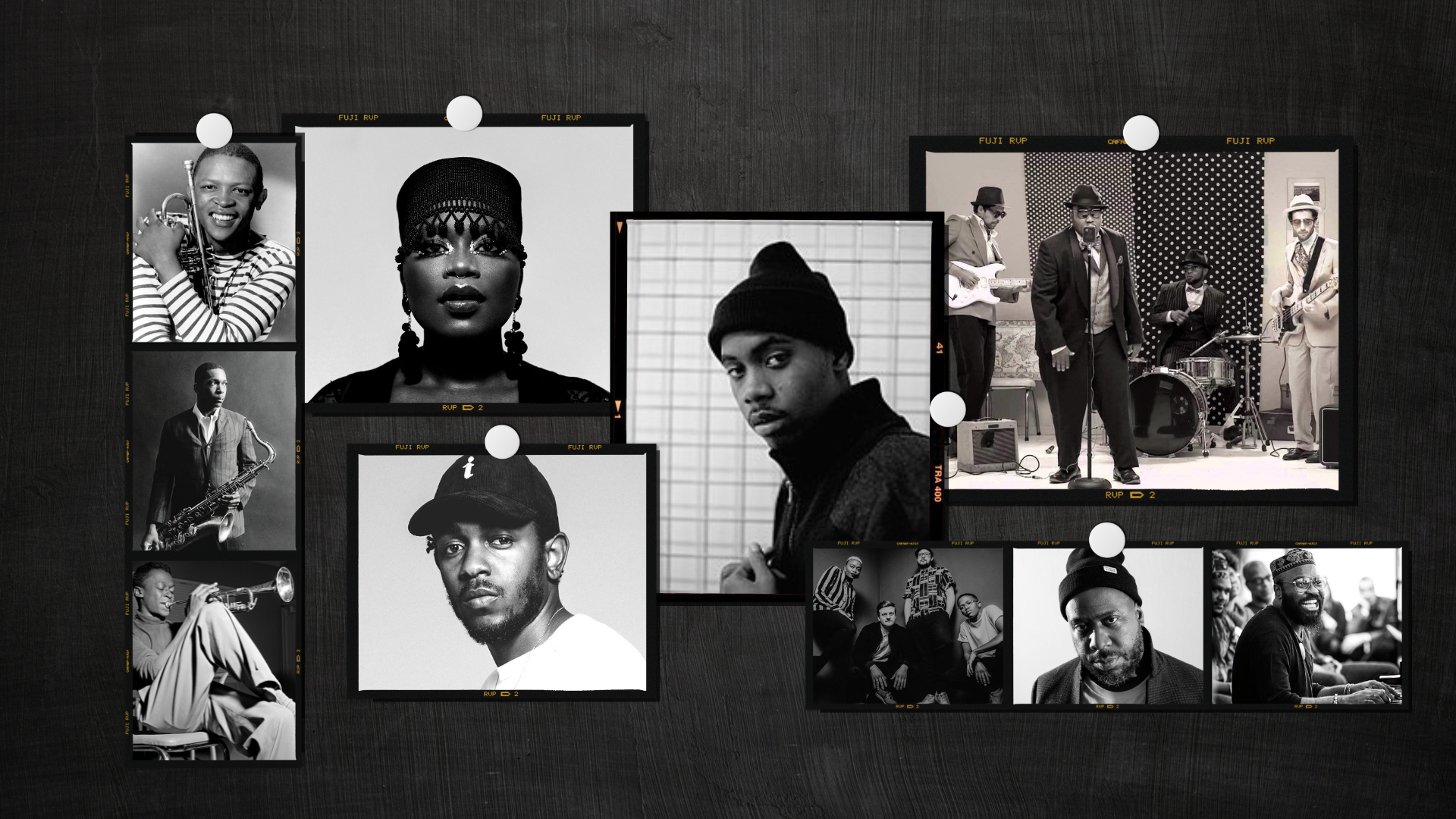How Kwesta and Kabza De Small’s ‘Speak N Vrostaan’ plots the future by merging the sounds of the present and the past
During the early noughties, Kwaito – once the creative outlet for young South Africans in the ‘90s – was supplanted by the breakbeats, syncopated rhythms and layered lyricism of Hip Hop. Fast forward to 2023 and the same fate has seemingly befallen hip-hop as the rattling hi-hats, bristling whistles, jazzy horns and genre-defining log drums of amapiano have attained ubiquity.
A pioneer of this infectious cocktail of sounds that has dominated social media, radio waves and dance floors since its breakthrough is Kabelo Motha, better known as Kabza De Small. The DJ and producer has greatly contributed to the mainstreaming of amapiano as an exponent of the sound since its rise through Pretoria’s underground scene. He’s credited with embracing amapiano’s vocal direction by teaming up with artists like Samthing Soweto, Sha Sha and Aymos and driving its evolution from a largely instrumental genre that drew from bacardi, deep house, Kwaito and jazz. Buoyed by amapiano’s growth; Kabza is now firmly in his prime boasting several awards, his PianoHub record label, and the title of Spotify’s most streamed South African album in 2022 for KOA II Part 1.
For his part, Kwesta has spent years at the summit of South African Hip Hop since his 2010 debut album Special ReKwest. 2017 marked the height of his career so far when his album DaKAR II garnered five South African Music Awards and spawned multiple hits including the Thabsie-assisted “Ngyaz’fela Ngawe” and “Ngud”, which highlighted his knack for infusing vernac and elements of Kwaito into his sound. His most recent body of work g.o.d guluva was, however, met with a lukewarm reception amidst rumours of the demise of his independent record label Rap Lyf. It’s against this backdrop that Kwesta and Kabza de Small join forces for Speak N Vrostaan – one still at the height of his powers and the other perhaps in need of a reinvention, akin to South African Hip Hop itself.
The rise of amapiano has signified a sonic change of guard of sorts; arguably becoming the primary medium for youthful expression. This scenario has seen rappers like Cassper Nyovest (who’s dabbled with both amapiano and Kwaito), Sizwe Alakine, Costa Titch and Focalistic embrace the genre by laying rhymes over amapiano soundscapes. It’s proven to be an objectively successful approach with “Monate Mpolaye”, “After Tears”, “Big Flexa” and “Ke Star” capturing the imagination for each artist respectively. Despite these successes, this move has proved divisive amongst some South African Hip Hop fans and artists who view it as an apparent act of betrayal.
“Thank God they showed their true colours, switched up ‘piano like vultures.” – AKA
With Speak n Vrostaan, Kwesta provides an alternative route by joining forces with one of amapiano’s most influential figures and tracing both their, and their respective discipline’s – lineages back to Kwaito. We caught up with him to discuss the message, process and intention behind the album.
“This is unapologetically hood music that speaks to Themba, Sfiso, Nomsa and Nhlanhla all at the same time. It’s really a music that sort of highlights the backgrounds we come from,” Kwesta says of the Kwaito – the catalyst behind this collaborative project with Kabza De Small. “I’ve always been influenced by Kwaito but…” he ponders; “there were too many bars to spit out and I couldn’t find the right time to scratch this Kwaito itch.” On Speak N Vrostaan the Katlehong-native sets that right, capturing the genre’s character and energy through his trademark drawl.
Layering his raspy flows over production largely helmed by Kabza (with production contributions from Tshego AMG, Makwa & Da Muziqal Chef) he satisfies an internal yearning. “I wanted to embrace that part of me because I grew up with Kwaito,” he shares. “I love Kwaito and wanted to showcase and celebrate it. After a conversation with Kabelo I felt like there was no better time or person to do it with.” The result is an offering that bears traces of the cultural, sonic and geographic influence of Kwaito. In the title itself we find both a running feature of Kwesta’s career, in slang-based expression and a nod to Kwaito’s conversational leanings. “That’s slang from the hood,” Kwesta says. “Tsotsitaal is what I feel would encapsulate a Kwaito album. It references us just getting to a point of understanding each other.”
Interestingly; the decorated rapper’s referral to an ‘us’ is both with regard to his collaborator and the audience at large. “What we’re saying with the music… we hope the people understand – but collaborating is also about listening more than doing, ‘cause that’s how you learn.” To begin with, the two artists had to learn each other after the pandemic serendipitously brought them into close quarters. “We met during lockdown at a Channel O Lockdown House Party.” Kwesta reveals. “We’d always greeted each other from afar but there was a limited number of people and no audience this time so we got a chance to share some words.” After the customary ‘we should work together sometime’ line was exchanged each artist went their own way until Kwesta received an unexpected reminder after liking an instagram post. A DM from Kabza simply read ‘uyang’kweleta’ (you owe me), and the ball was rolling.
Low-key hangout sessions ensued; deepening the pair’s mutual appreciation on a personal level before conversations around recording crept in with the inevitability of amapiano horns. As if determining the birthplace of both South African Hip Hop and amapiano; those conversations would translate into a 10-tracker unambiguously situated in the heart of urban South Africa. With the iconography and pantsula outfits the artists don on the album cover revealing the lingering impact of Kwaito, the progenitor is equally evident. What this project is not, though, is a glorified assemblage of cover songs. “It’s not a copy and paste,” Kwesta assures us. “When you’re doing a Kwaito album people are like ‘I bet you’re just gonna sample this and that, but it doesn’t only have the nostalgic feeling – it’s actually new sounding music.”
Contemporary infusions – like the log drum praised on “Sghubu S’ka Kabza” – layer the album’s soundbeds accordingly while remnants of Kwaito grooves navigate its landscape as though transiting street corners, complemented by basslines thick enough to pave walkways and slang delivered as enticingly as neighbourly gossip – before revealing both amapiano and South African Hip Hop as blocks in Kwaito’s neighbourhood.
This sonic space Speak N Vorstaan occupies makes for a deft balance of familiarity and experimentation wherein the Mzonkonko-laced “Umngani”, an ode to TKZee’s Magesh, lives alongside the R&B and G-Funk fusion of the Young Stunna-assisted “Emathandweni”. Such inventiveness is the outcome of Kwesta and Kabza de Small reaching an ‘understanding’ not to replicate, but rather renovate, a cherished piece of the nation’s sonic architecture. This imaginativeness is likely to impress fans of all persuasions, which is fitting as they’re the intended custodians of the art. “It’s an album for the people,” Kwesta declares. “It’s really their music because they made us.” This is an outlook Kwesta has maintained throughout his career and is informed by his grass-roots ethos. “When you get into the studio you can only speak on the things you’ve seen and hope they’ll relate. Nobody makes a hit. It’s just a song and the people’s reaction to it is what makes it a hit.”
Through Kabza De Small’s show don’t tell approach to fan interaction, Kwesta could gauge public reception during the creative process. “Everyone watches Kabza’s lives.” he exclaims. “He would play the stuff we were working on his streams and the response was crazy! I was getting calls like ‘Yo what song is that?’ and people were literally in the comments saying ‘If this isn’t on the project, then the project is trash’.” The song in question in one case was “Mrholo Wayizolo” which was created after the album was completed and getting mastered. After such pronounced clamouring, the duo relented and added it to the tracklist. Levelling the desire to cater to the public with something more introspective; Kwesta spared himself a moment of catharsis on “Is’Pantsula” – an homage to Trompies and a loved one. “My cousin, Pantsula, was a Kwaito head and his favourite artist was Dr Mageu.” he divulges. “He passed away last year. That was how Kwaito was introduced to me so “Is’Pantsula.”
It’s perhaps the most vulnerable the artist, born Senzo Vilakazi, gets on the album. “It really ties everything together. It had that Trompies feel to it, it’s a story of my triumph of independence and if you look at the cover and hear this you’ll be like ‘Oh yeah, of course’. It feels like the centre of everything which is why we put it halfway.” It’s in this instance that we’re reminded of Kwaito’s significance as a vehicle for both personal and collective remembrance.
Speak N Vrostaan breaks down the fourth wall further as Kabza’s rapping alter-ego Papta Mancane graces several tracks including the addictive “Huzet”. “In a collaborative effort everybody’s input matters,” Kwesta says. “He initially didn’t wanna do that, I won’t lie. He took a bit of convincing but eventually jumped on the mic and also started enjoying it I think.” That accommodating spirit is the common thread between Kwaito, amapiano and Hip Hop. The three genres share an affinity for the classic posse cut and on “Sghubu s’ka Kabza” Hulumeni, Masterpiece YVK and DJ Tira all make an appearance.
“Everyone could just jump on and we had a whole host of artists on there,” Kwesta explains in closing. “If you think about songs like “Ngeke Balunge”, that’s how the grootman Spikiri put the game together. We’re trying to keep that same energy.”






